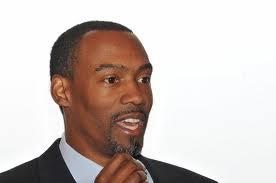The Ghosts of October
The New York Times
October 24, 2013
by Doug Glanville
As I push my 4-year-old daughter on the swing, I wonder when the day will come when she will not need me to supply the power. My children remind me that time is marching on even when the frenetic pace of a parenting day convinces us that we don’t have time to age.
With this baseball season’s final act under way, there are some conspicuously absent figures, players we associate with some of the finest postseason moments in the game’s history. There is no Derek Jeter captaining his team to the World Series — no heart-stopping catch running into the stands, no unfathomable backhand flip to nail the runner at home plate. But more important for me, there is no Mariano Rivera — no “Enter Sandman” establishing the rhythm of all of the bats he was about to break in recording the final three outs of another Yankee win. We will likely see Jeter again, but Rivera’s fastball has cracked the catcher’s mitt for the last time.
There is an eerie silence to this new age — noticeable even to fans who rooted against the Yankees — without these iconic figures. This is a new reality: Rivera’s absence is permanent. He is not coming back. Many players fade into retirement, voluntary or involuntary, at this time of year, but there is something unsettlingly final about a postseason without Rivera.
For me, the void he leaves instantly taps my childhood memories of Mike Schmidt, Garry Maddox and Steve Carlton — my three favorite players from my most passionate days as a Phillies fan. They were also fixtures of the playoff landscape; the Phillies were in postseason play all through the ‘70s and early ‘80s.
And they also retired. Schmidt’s was a tearful goodbye. Maddox conceded that his mind was still sharp but his body was left behind during his typically catlike jumps in the outfield. Carlton labored on, becoming a journeyman pitcher, inauspiciously recording his 4,000th strikeout in 1986 in Candlestick Park in San Francisco on a third-place-finishing Giants team, far from his true baseball home in Philadelphia.
In our young minds, baseball has a permanence. We embrace it as a near certainty, one that rises in spring and sets in the fall as our lives revolve around it. Yet each larger-than-life player from our baseball childhood who walks out the clubhouse door for the last time forces us kicking and screaming into an uncomfortable maturity. We wonder where our childhood has gone. We are shocked into understanding that our favorite players are aging, and that we must be aging, too.
The game carries on, almost insensitively so. And we look to find a new place to call home. It could be through exciting young players, a Yasiel Puig, a Robinson Cano, maybe a rookie sensation we’ve still never heard of who modeled his game on Derek Jeter’s when he was a kid. October baseball is the best time to find these new heroes, these new homes, because that’s when the baseball’s magic is in sharpest relief.
But when the final game is played, when the winners celebrate and the ticker tape falls, again there is silence. And in the quiet corners of baseball’s historic order, some players are taking off their uniforms for the last time. And inevitably, some of those now-former players defined post-season baseball, and made us love the game because of how they stood in the batter’s box, or the music that played each time they danced to the mound.
Maybe it isn’t about how long my daughter will still need me to push her on that swing. Need is too strong a word. She probably can already swing by herself. So why does she still want me to push her? I get the feeling that it’s the same reason so many fans, deep in their hearts and against all reason, are hoping to see Mariano Rivera walk back on to the field again, and again.
Republished from NYTimes.com






